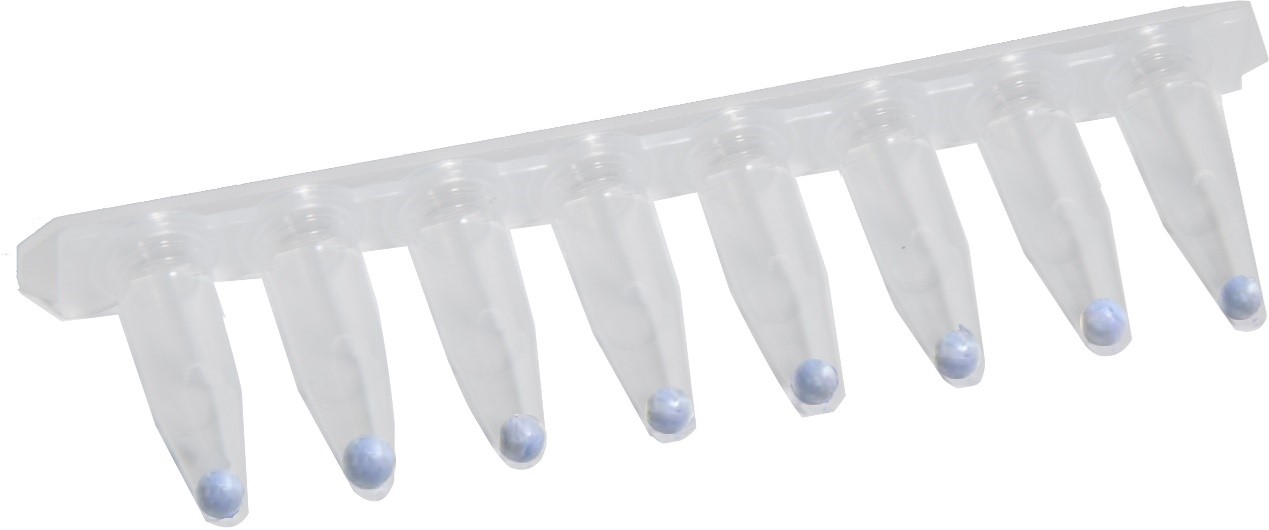In the realm of healthcare and diagnostics, speed, convenience, and precision have long been the coveted goals. With the continuous advancement of diagnostic technologies, portable rapid testing has emerged as a formidable tool in modern healthcare. Among these, Point-of-Care Testing (POCT) has played a pivotal role in diagnostic and monitoring tests conducted under constraints in clinical settings, ambulances, households, and more. To achieve these swift diagnostics, portable assay kits are indispensable. In recent years, the rise of freeze-dried microsphere technology has brought about a revolutionary transformation in the POCT field.
What Are Freeze-Dried Microspheres?
Freeze-dried microspheres are freeze-dried reagents designed for molecular diagnostics, characterized by their singular and precisely measured content, presented in the form of spherical beads. The development of this technology stemmed from improvements to traditional freeze-drying techniques, aiming to deliver greater stability, reduced errors, and enhanced flexibility.

The Production Process of Freeze-Dried Microspheres
Compared to conventional freeze-drying techniques, the production process of freeze-dried microspheres involves specific steps:
Optimizing Conditions:
Initially, it is essential to optimize the conditions for freeze-drying. This includes determining the ideal freezing conditions and the potential impact of components in the sample on the freeze-drying process. This step assists in establishing the best reagent formulation to minimize costs and ensure product quality.
Precise Liquid Dispensing & Freezing:
Reagent liquid is dispensed using a dropper into a vessel containing liquid nitrogen, enabling rapid freezing into small beads. Liquid nitrogen, known for its stability, non-toxicity, and extremely low temperatures, is the ideal low-temperature cryoprotectant.
Primary Drying:
Frozen beads are transferred to a freezing cabinet for primary drying, facilitating the sublimation of ice and removal of most of the moisture. This step helps prevent collapse and ensures product stability.
Secondary Drying:
Remaining unfrozen water is removed in the secondary drying stage, typically resulting in a residual water content of about 1% to 2%.
Packaging:
Due to the high hygroscopicity of freeze-dried microspheres, the product must be packaged in a humidity-controlled environment to avoid moisture absorption, which can impact performance.
Quality Control:
Rigorous quality control is necessary, encompassing sensitivity testing, appearance assessment, size measurement, moisture content, and other physical characteristics to ensure the stability and precision of each freeze-dried microsphere.
Why Choose Freeze-Dried Microspheres?
The development of freeze-dried microsphere technology offers several notable advantages:
Higher Stability:
Freeze-dried microspheres mitigate potential cross-contamination risks and reduce degradation risks caused by repeated freeze-thaw cycles. Each freeze-dried microsphere is independent, minimizing exposure to moisture.
Enhanced Flexibility:
Uniform in size, freeze-dried microspheres are suitable for various applications, such as microfluidic cartridges and POCT devices, and can be customized as needed.
Lower Cost:
Higher production efficiency results in significantly increased yields compared to traditional freeze-drying, ultimately reducing unit costs.
Greater Precision:
Each freeze-dried microsphere is a precisely measured reagent, reducing random errors and enhancing testing accuracy.
Ease of Repackaging: Freeze-dried microspheres are amenable to repackaging needs, especially in the field of microfluidic POCT.
Conclusion
Freeze-dried microsphere technology represents a significant innovation in the POCT field, pushing the boundaries of diagnostic speed, convenience, and accuracy. By reducing potential risks, improving production efficiency, and lowering costs, freeze-dried microspheres offer a more reliable solution for diagnostics in the healthcare sector. In the future, we can anticipate the emergence of more portable diagnostic devices based on freeze-dried microsphere technology, expanding the possibilities for rapid disease diagnosis and monitoring.





